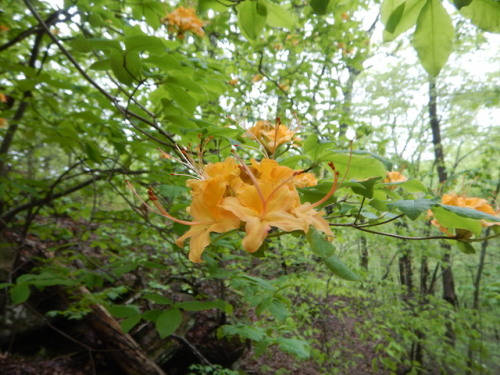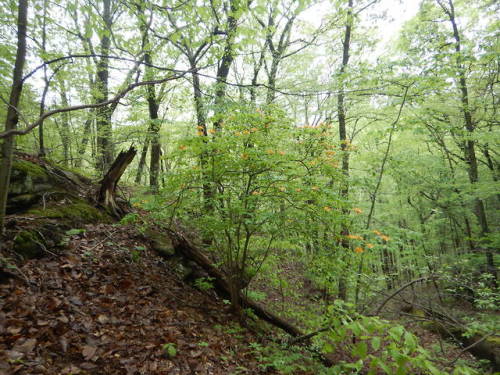howlmountainfarm:treemigration:The Candled Azalea or the Appalachian Flame Azalea,It sticks out from
howlmountainfarm:treemigration:The Candled Azalea or the Appalachian Flame Azalea,It sticks out from a distance like a lighthouse on a peer in the middle of a storm, the bright orange blooms of Rhododendron calendulaceum are no joke. The species itself is somewhat limited to the acid belts of the appalachian mountains near the upland forests that are comprised of oaks and pines, with these upland forests usually a sandstone capping member, in this case Ohio’s Black Hand Sandstone Member which is early Mississippian era. The resulting soil is fairly sandy, aerated, and acidic. In this location, the largest examples have either survived from human interference( anti-deer fences), or much like the story of the pink lady slipper rely on the steep cliffs to provide safe haven. In the deep south within’ the Appalachian Mountains these are more common and are even commonly grown as cultivars in the horticultural trade fairly often. I understand why too and apparently many other people did in the past; so much so, they dug up large amounts and depleted the population in area’s outlining the main stretches of the Appalachian Mountains.Besides it’s habitat preference, this species has a real friend with hummingbirds, humming bird hawk moths, and most importantly the swallowtail butterflies. Just like many species in the Lilium genera, this species also has massive and widely spaced anthers with an outstretched pistol with a small stigmatic tip; because of this, the floral display requires a massive amount of pollen to really set decent seed. If you happen to have acidic soil and live in a plateau land where you can support both swallowtail butterflies and this species, I’de highly recommend doing so. Always get seed or plant from a reliable, NOT POACHED, source.It’s almost the time of the year for these and I’m EXCITED -- source link
Tumblr Blog : cedar-glade.tumblr.com




